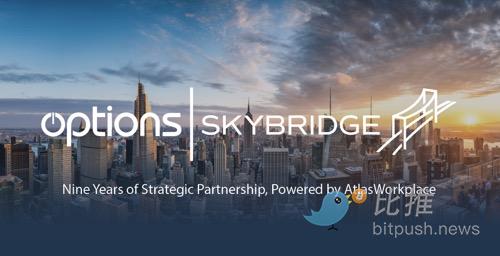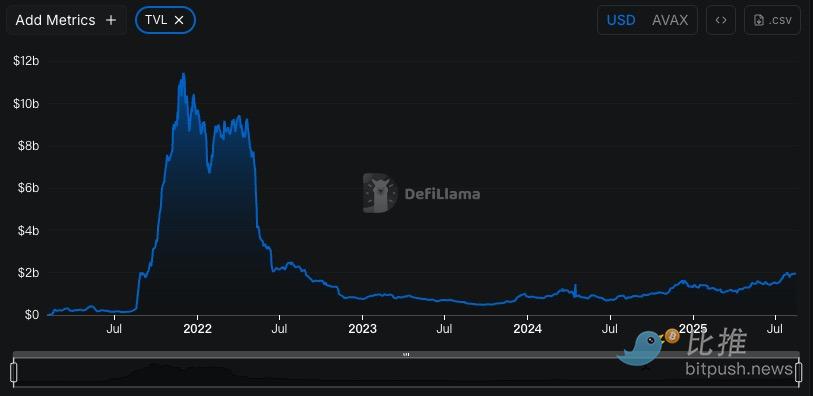Author: Bitpush
In one of the hottest narratives in the crypto industry—the tokenization wave of real-world assets (RWA)—Anthony Scaramucci is once again at the forefront.
This Wall Street investor, who previously served as a vice president at Goldman Sachs and gained notoriety for his brief role as the White House Communications Director under the Trump administration, is now betting on the emerging track of "fund tokenization" as the head of SkyBridge Capital. He recently announced that SkyBridge will tokenize approximately $300 million of its assets (about 10% of its total assets under management) and has chosen Avalanche as the blockchain to host it.

For Scaramucci, this is not just a technical experiment in portfolio management, but a judgment on the future financial landscape. In an interview with Fortune magazine, he candidly stated that 2026 to 2027 will mark the "era of real-world asset tokenization." In his view, the value of tokenization lies not only in increased efficiency but also in redefining the transaction and circulation methods of traditional finance.
Scaramucci's Financial and Political Journey
Before entering the crypto world, Scaramucci's experiences were already legendary. After graduating from Harvard Law School, he joined Goldman Sachs as a vice president in the investment banking division. In 1996, he founded Oscar Capital, which he later sold to Neuberger Berman. In 2005, he founded SkyBridge Capital, gradually building it into a highly influential asset management company in the alternative investment space.

In 2017, he became a focal point in the U.S. media for his brief tenure as the White House Communications Director under the Trump administration, serving only 11 days. However, his dual identity as a "White House storm" and "Wall Street veteran" kept him in the public eye for a long time. After leaving politics, Scaramucci did not retreat into the background but continued to delve into investments, quickly embracing cryptocurrency after 2020. SkyBridge has successively established Bitcoin and Ethereum funds, and Scaramucci himself has publicly supported the crypto industry multiple times.
Although he faced setbacks due to investments in FTX, this did not shake his long-term belief: the integration of crypto and traditional finance is an irreversible trend, and tokenization is the most promising bridge.
RWA Boom: U.S. Treasuries vs. Fund Tokenization
The starting point of the RWA track is almost "on-chain U.S. Treasuries." During the Federal Reserve's interest rate hike cycle, U.S. government bonds and money market funds have become the most sought-after assets on-chain. They are low-risk and provide stable returns, making them ideal allocations for DAOs, stablecoin issuers, and exchanges.
Overview of mainstream RWA projects
Project/Institution
Asset Type
Blockchain Deployed
Current Scale/Status
BlackRockBUIDL
U.S. Treasuries/Money Funds
Ethereum
Billions of dollars, RWA leader
Franklin Templeton
Money Market Fund
Polygon, Stellar
Hundreds of millions, primarily compliant investors
VanEck
Money Fund Pilot
Solana, Aptos
Emerging exploration stage
Ondo Finance
U.S. Treasuries/Short-term Bonds
Ethereum, Solana
High marketization, attracting DeFi users
SkyBridge Capital
Hedge Fund Shares
Avalanche
$300 million (about 10% of AUM), first entry into fund-type RWA
It can be seen that SkyBridge's approach differs significantly from mainstream RWA routes: it is not choosing low-risk U.S. Treasuries, but rather two hedge funds: one is a fund for crypto assets like Bitcoin that are not classified as securities by the SEC, and the other is a "fund of funds" that encompasses SkyBridge's venture capital and crypto fund products. This type of asset targets a higher threshold of investors, has relatively limited liquidity, but signifies higher returns and differentiated competition.
Current Status of Avalanche: Declining Popularity, Can RWA Reverse It?
Avalanche was once considered a "Ethereum killer" during the DeFi boom of 2021-2022, with a peak TVL exceeding $11 billion. However, as the market has retreated, Solana has rebounded strongly, and Ethereum L2 has exploded, Avalanche's popularity has noticeably diminished:
TVL Reduction: According to DefiLlama, Avalanche's current DeFi asset scale is less than $2 billion, far below its peak.
Decline in Ecosystem Activity: Compared to Solana's comprehensive recovery in meme, NFT, and DeFi, Avalanche's user growth and application popularity have been mediocre.
Lack of New Narrative Drivers: In the context of the emerging Layer 2 narrative, Solana's ecosystem, and the continuous emergence of Bitcoin Layer 2, Avalanche lacks sufficient blockbuster topics.

Most RWA projects choose Ethereum due to its mature compliance infrastructure and institutional recognition; Solana has rapidly risen due to its high performance and low cost; Aptos is positioned as a testing ground for "compliant new public chains." Avalanche is not the first choice for RWA, but its Subnet architecture is tailored for institutions, allowing for the design of dedicated blockchain environments for compliance, custody, and auditing, which is precisely what SkyBridge values.
Roles of different public chains in the RWA field
Public Chain
Advantages
Typical RWA Projects
Ethereum
Mature compliance infrastructure, institutional preference
BlackRock BUIDL, Ondo
Solana
High performance, low transaction costs
Franklin Templeton, some Ondo products
Avalanche
Subnet flexibility, fast transaction speed
SkyBridge hedge fund tokenization
Aptos
Emerging, testing the compliance market
VanEck money fund pilot
Avalanche, with the "endorsement" of SkyBridge, is attempting to break through in the crowded RWA track, but SkyBridge's fund tokenization is not the only action Avalanche is taking in the RWA field.
This year, Bergen County in New Jersey—one of the wealthiest suburbs of New York—announced the migration of 370,000 property deeds to the Avalanche chain, with a total value of up to $240 billion. These deeds will be stored in an immutable, searchable on-chain ledger, representing the world's first large-scale digitization and on-chain case of real estate contracts.
This means that Avalanche is not merely betting on financial products but is attempting to establish its own on-chain ecosystem around two major categories of traditional assets: "funds + real estate."
So, can RWA bring liquidity to Avalanche?
The issue is that RWA is not an overnight market. Even if the cases of SkyBridge and Bergen County are symbolic, they may not directly translate into on-chain trading activity in the short term:
The tokenization of hedge fund shares targets high-net-worth individuals, and liquidity is inherently limited;
The on-chain migration of property deeds is closer to a "digital archive," and there is still institutional and market distance from true financialization (such as mortgages, secondary trading);
Avalanche needs not only "headline news" but also to build a complete application scenario and financial products around these assets to truly attract funds into the on-chain ecosystem.
In other words, RWA provides Avalanche with a new story, but whether it can turn into new liquidity depends on whether the ecosystem can build on-chain markets for trading, lending, insurance, and more around these assets.
Outlook: Three Possibilities for Avalanche
RWA has given Avalanche a brand new story, but the outcomes may diverge:
Successful Transformation into an Institutional Chain
If the cases of SkyBridge and Bergen County can attract more funds, banks, and local governments to follow suit, Avalanche has the opportunity to establish a barrier in the "on-chain institutional and public asset" track. It may not become the main battlefield of DeFi, but it can become the infrastructure for real asset on-chain.Continued Marginalization
If RWA only remains at the "news effect" level without bringing real trading and liquidity, then Avalanche's position will not fundamentally improve. The halo of RWA may ultimately be siphoned off by Ethereum, Solana, or even new compliant chains.Waiting for the Next Narrative
Avalanche may also gain some attention through RWA, accumulating resources for the next wave of industry narratives (such as AI + blockchain, national digital currencies, cross-border settlements, etc.). RWA may not directly bring liquidity, but it could reserve chips for a future comeback.
Conclusion
RWA has already moved from experimentation to reality: data from RWA.xyz shows that the tokenization market has doubled in the past year to $26 billion, with institutions like McKinsey, Ripple, and BCG predicting it could grow to trillions of dollars by 2030. Against this backdrop, Avalanche is not betting on the popular U.S. Treasury track but rather on high-net-worth funds and real estate contracts.
This path carries greater risks, but if successful, Avalanche may indeed find a different way to survive compared to Ethereum and Solana through RWA.
免责声明:本文章仅代表作者个人观点,不代表本平台的立场和观点。本文章仅供信息分享,不构成对任何人的任何投资建议。用户与作者之间的任何争议,与本平台无关。如网页中刊载的文章或图片涉及侵权,请提供相关的权利证明和身份证明发送邮件到support@aicoin.com,本平台相关工作人员将会进行核查。




